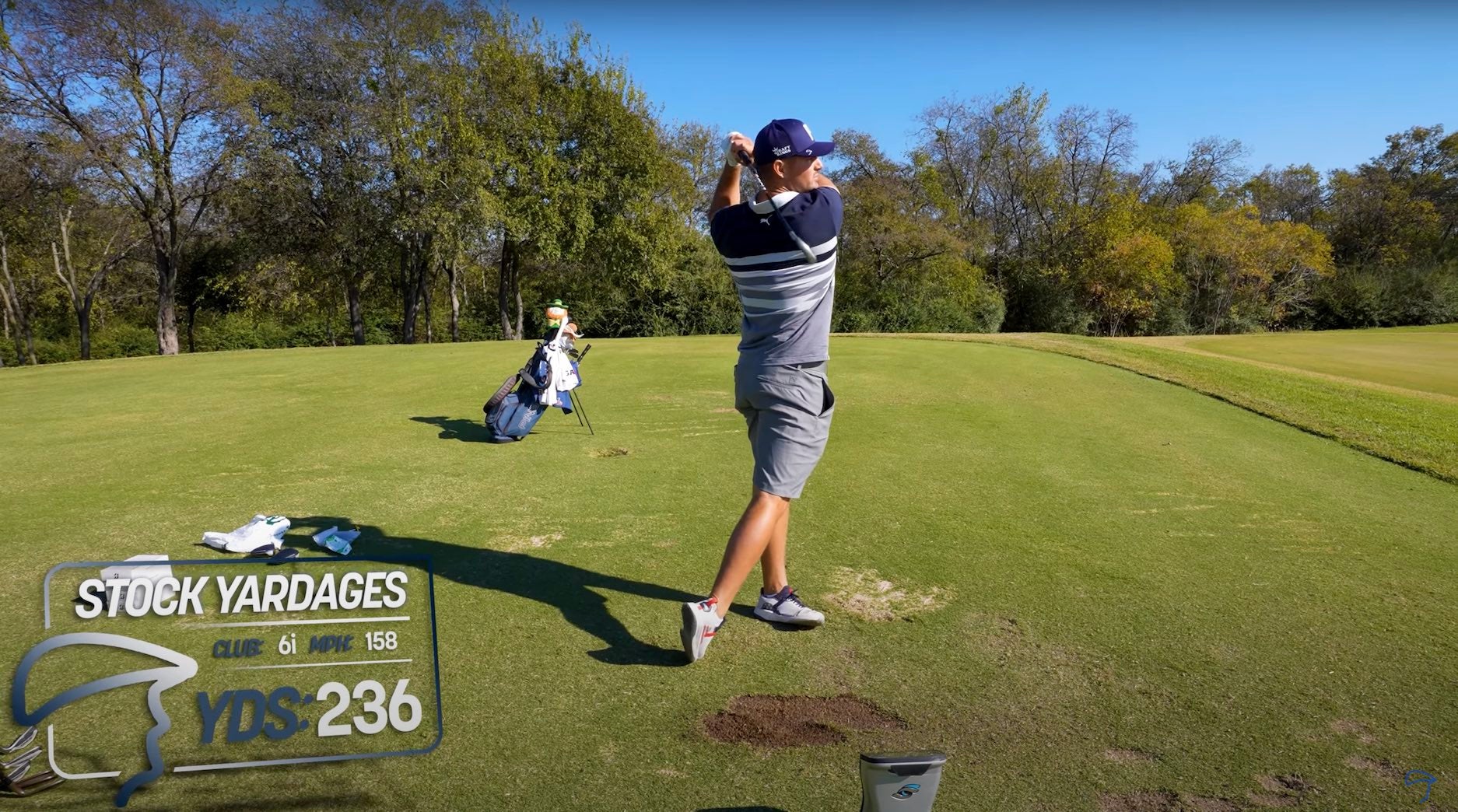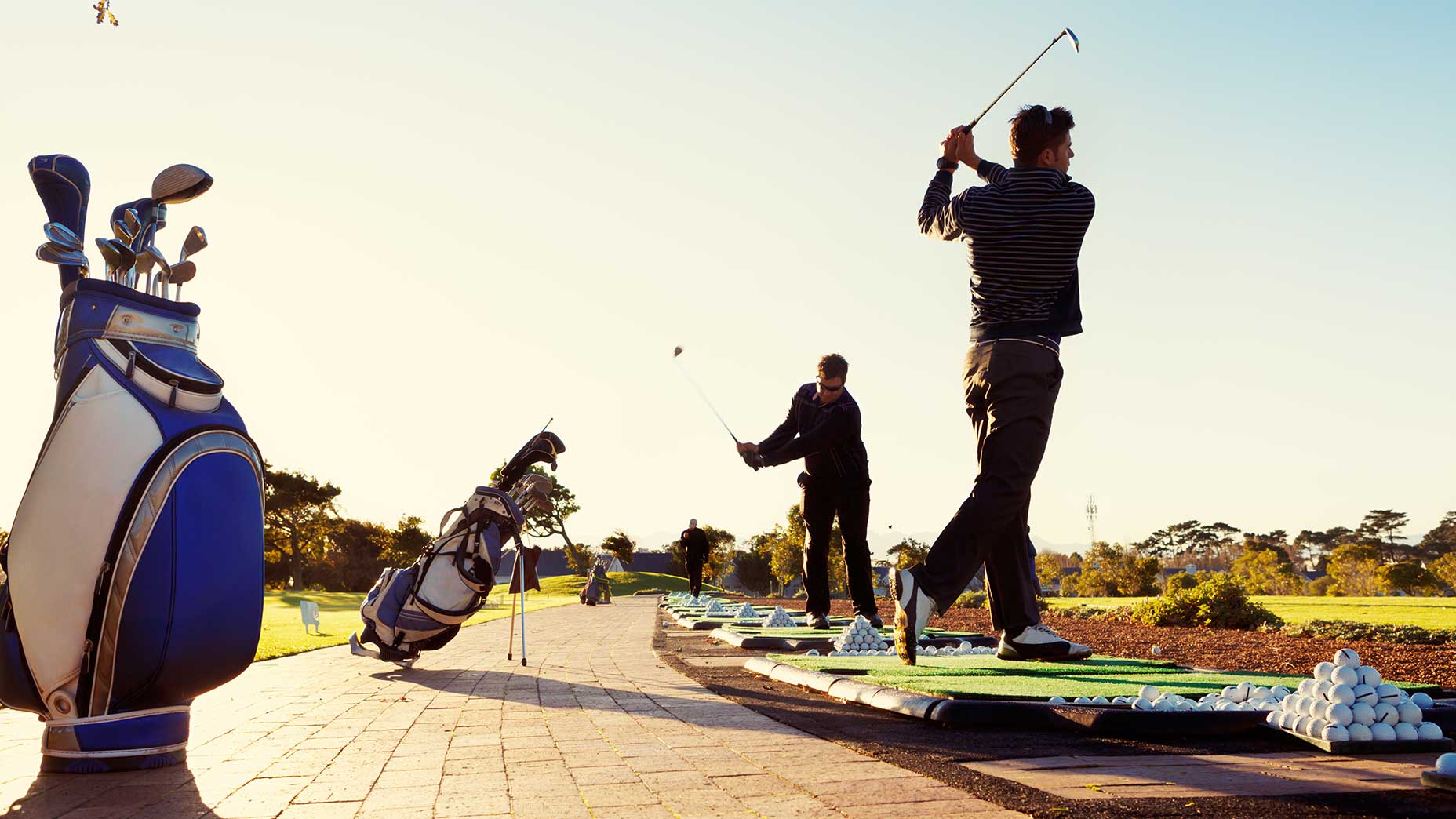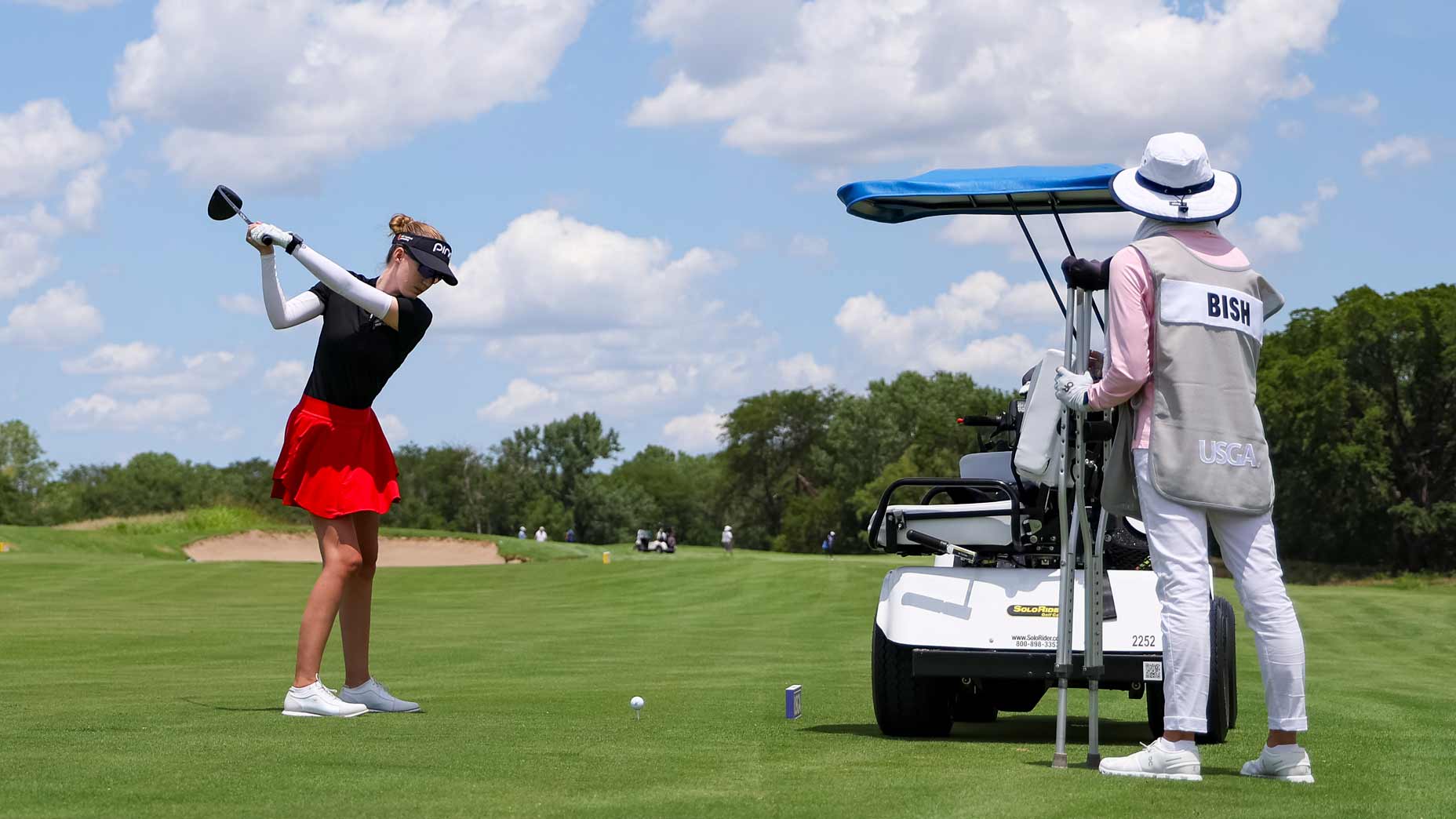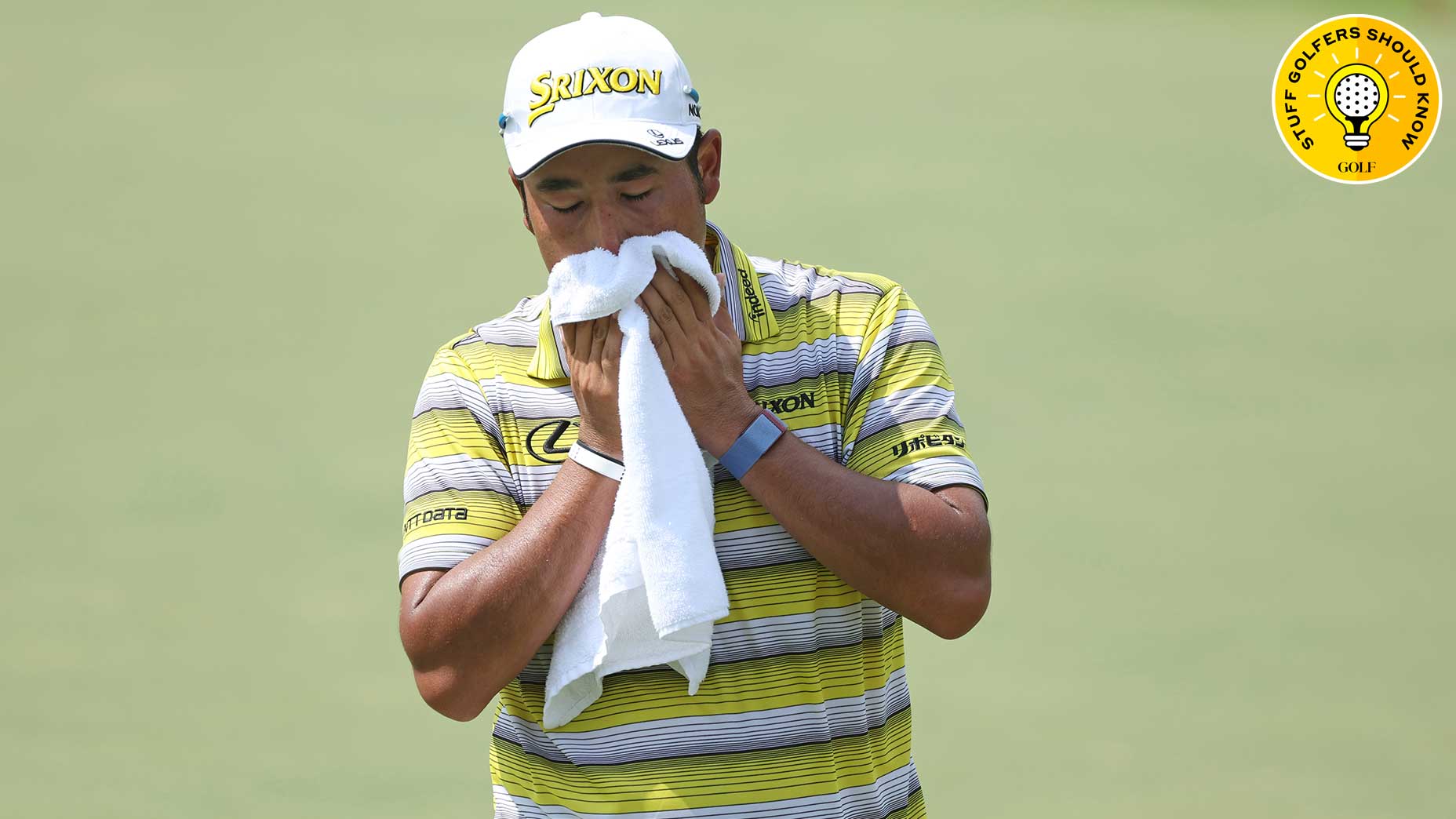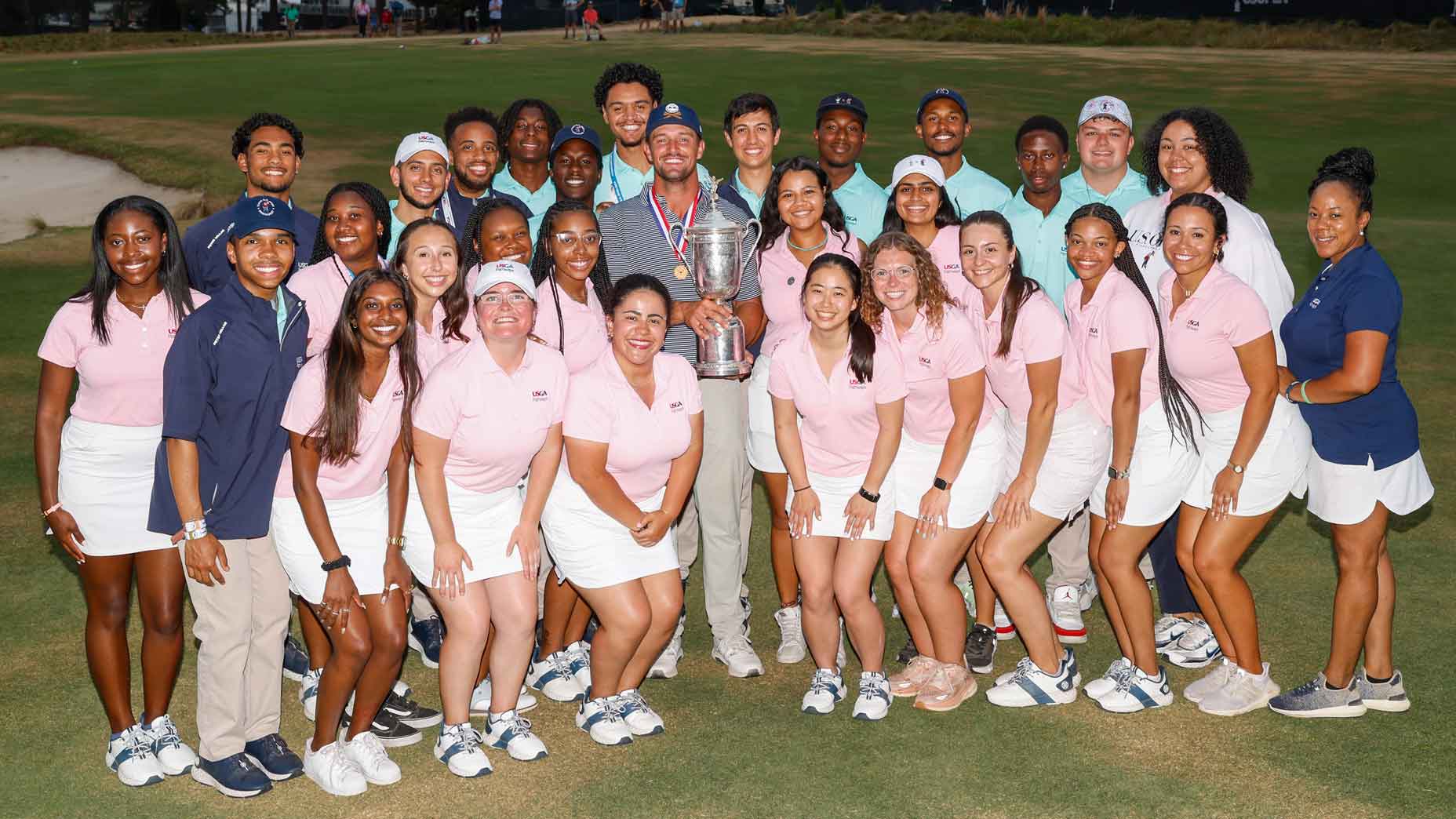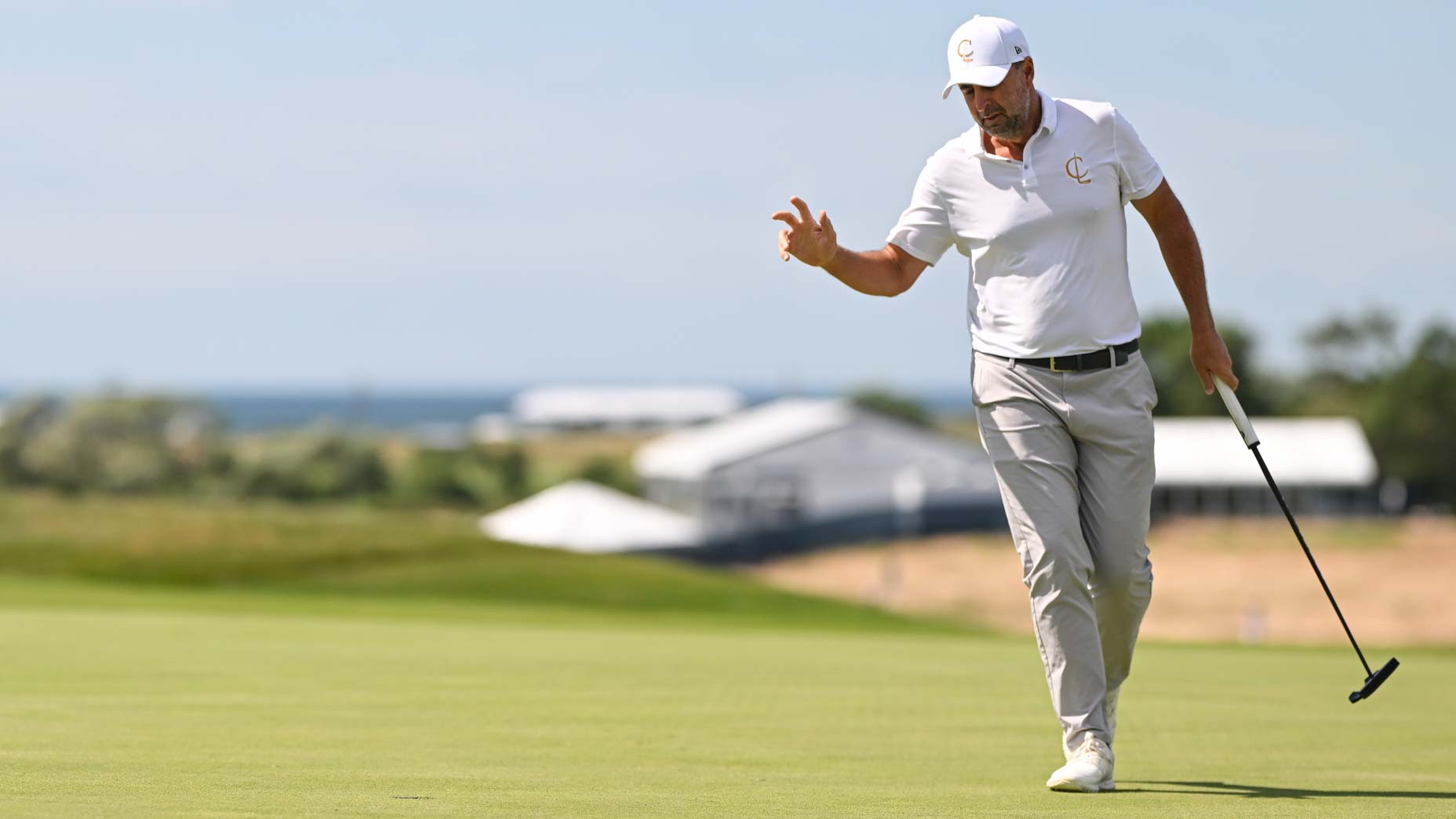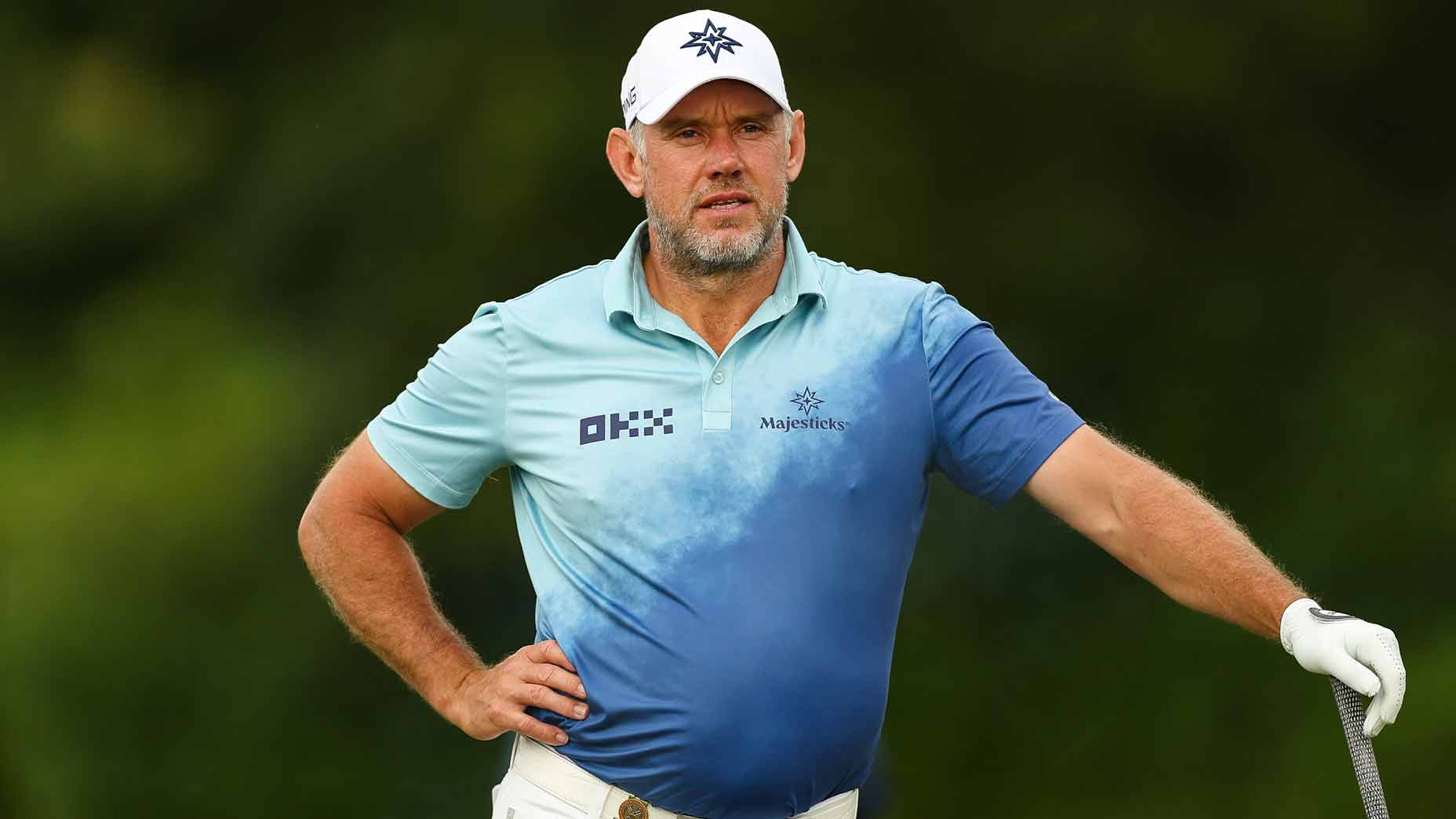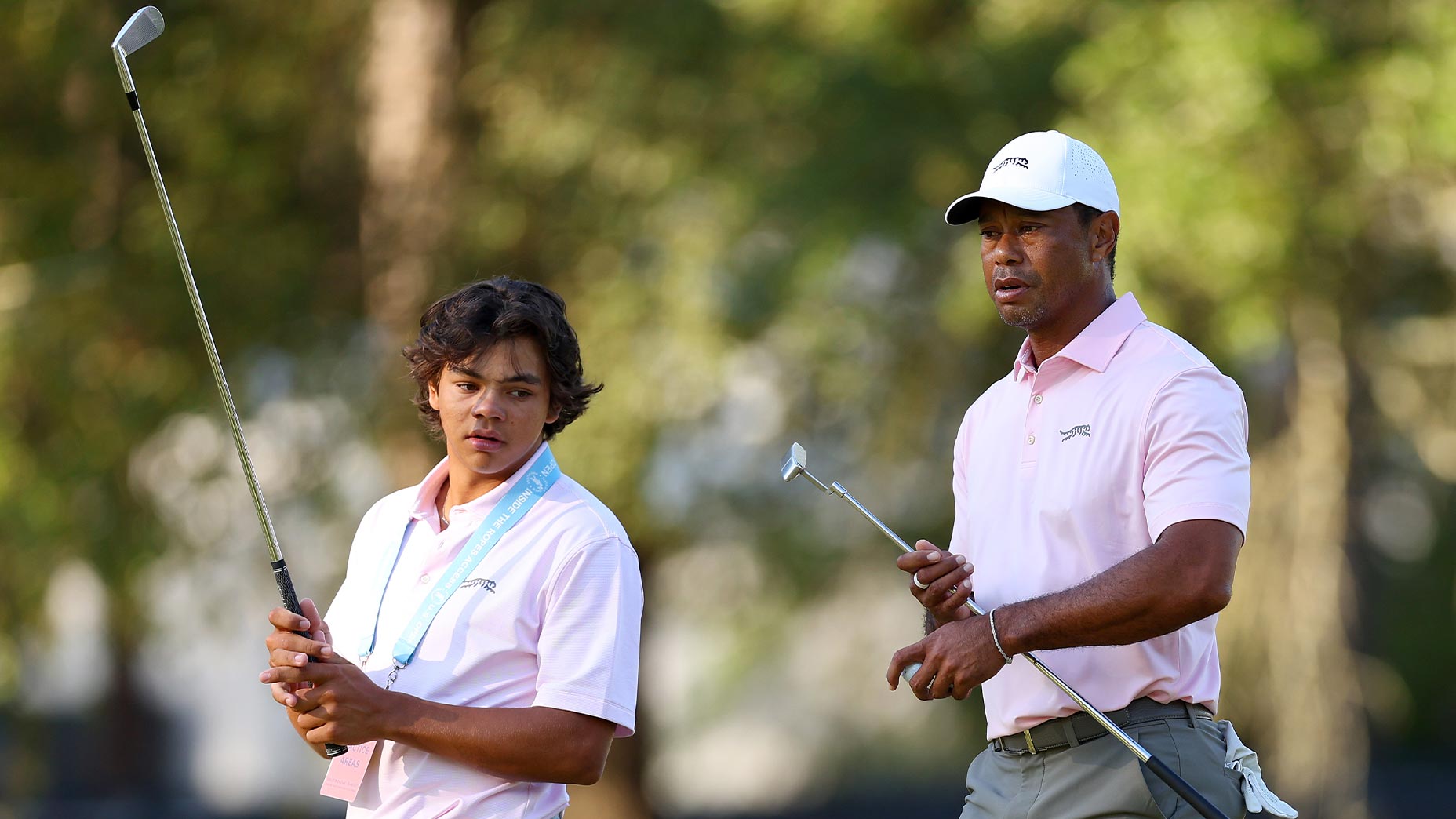How far do you hit your 7-iron? The answer will tell you which tees to play

Your 7-iron distance can be a helpful guide.
getty images
Here’s a tip: You probably shouldn’t be playing from the tips.
Deep down, you know this. But for whatever reason — ego, peer pressure, lack of better options — you wind up taking on more course than you can handle.
You are not alone. According to the USGA, in a survey of more than 700 PGA and LPGA professionals, 92 percent said that it is “extremely common” or “somewhat common” for golfers to peg it from too far back. And the evidence isn’t merely anecdotal. Scoring data shows that roughly 75 percent of female golfers and 50 percent of male golfers play from distances that exceed their abilities.
The consequences? Aside from higher scores, rounds become a grind, and golf becomes less fun.
Over the years, several campaigns have been launched to address this problem (remember those TV spots in which Jack Nicklaus acknowledged that even he needed to “Tee it Forward“?). But when it comes to moving up a box, the game still has a ways to go.
Which brings us to a new initiative, a data-driven offering from the USGA, aimed at helping golfers select the proper tees. It’s called — wait for it — Best Tees.
The gist is this: if you know how far you hit your 7-iron, the Best Tees system can tell you which boxes you should be playing. Hint: If you’re a typical male golfer, you should be playing from 6,100 yards; if you’re a typical female golfer, you should be playing from just over 4,400 yards.
More on those numbers in a minute.
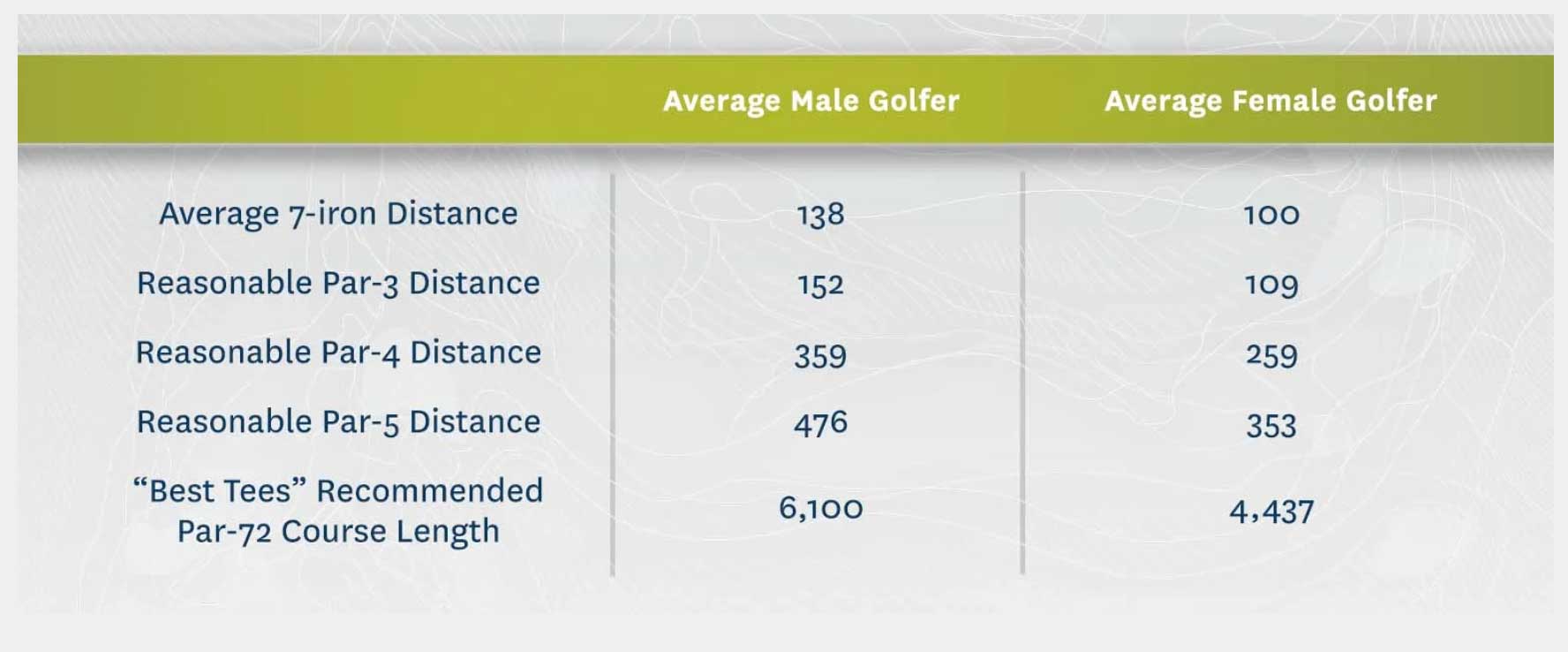
But first, some background on the methodology.
The Best Tees system arose from several years of research that included analyses of World Handicap System scores and hitting-distance data, as well as surveys of golfer preferences. (In this work, the USGA collaborated with the American Society of Golf Course Architects; the National Golf Course Owners Association; the Golf Course Superintendents Association of America; and the LPGA and PGA).
To arrive at their recommendations, researchers defined a set of tees as being a good fit for a golfer’s abilities when “it allows them to comfortably reach the fairway on par 4s and par 5s, reach the vicinity of most greens in regulation, and allows them to hit a variety of clubs on their approach.” In surveys, meanwhile, golfers were asked to indicate when holes felt “too long”, “too short” or “reasonable.”
That definition and those preferences were then combined to create a system that can recommend a course length based on a single club as reference: the 7-iron. The 7-iron was chosen because most golfers have a decent handle on how far they hit theirs, and because golf instructors often use the 7 iron as a reference point in lessons. It’s the Esperanto of irons, with a language around it that most of us can understand.
And that’s the point, really. To communicate important information clearly. Most golfers, after all, want to play the right tees; surveys show that. Course operators want that, too. But most say they lack an objective method for pointing golfers to the proper box.
The Best Tees system provides that. It is based on averages. The average male golfer hits his 7-iron 138 yards; the average female golfer hits hers 100 yards. Those numbers translate into par-72 course length recommendations of 6,100 and 4,437 yards, respectively. On average. But because not all golfers or courses are created equal, the system is designed to be customizable to any player at any property.
The system is currently being tested at 60 courses around the country. Feedback from that testing will be used to fine-tune the system before a wider rollout after 2023.

